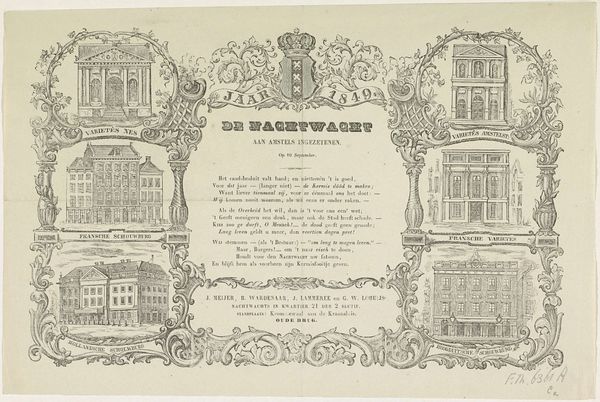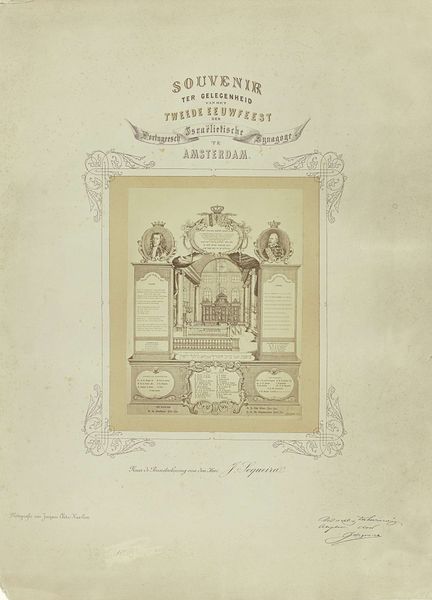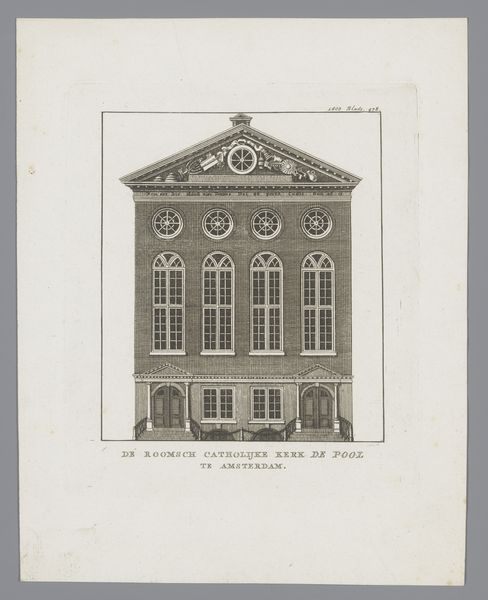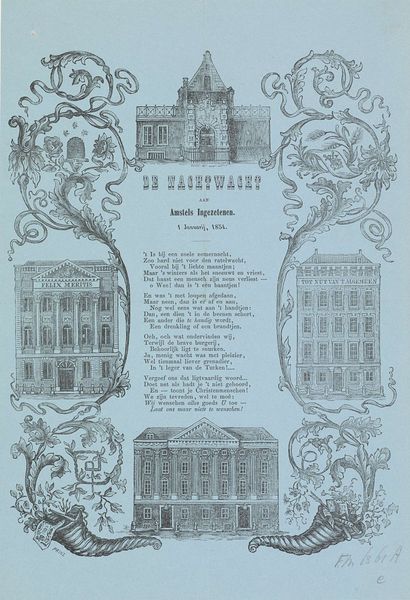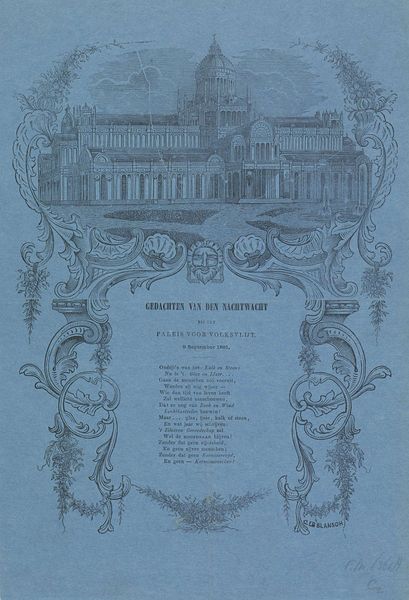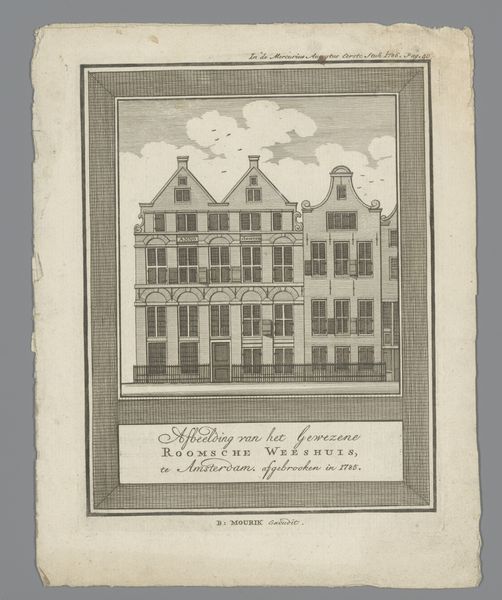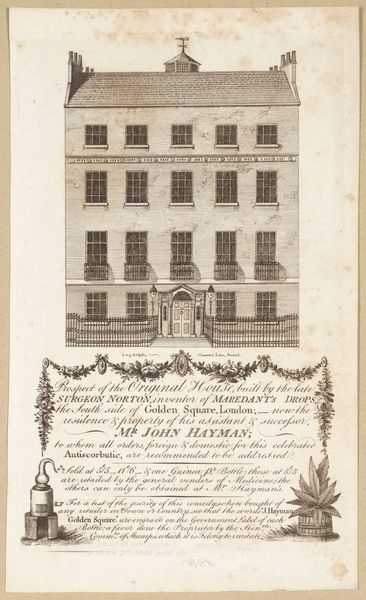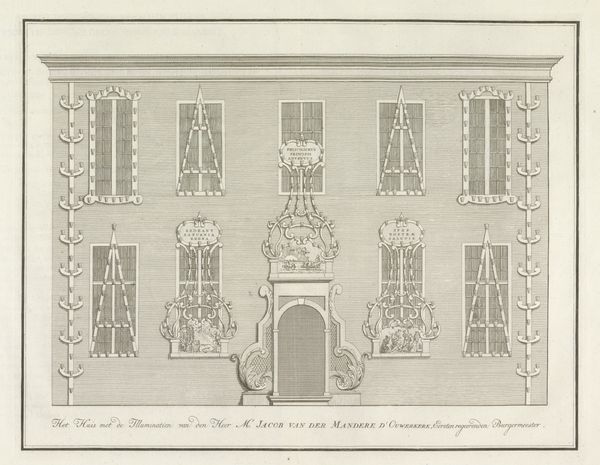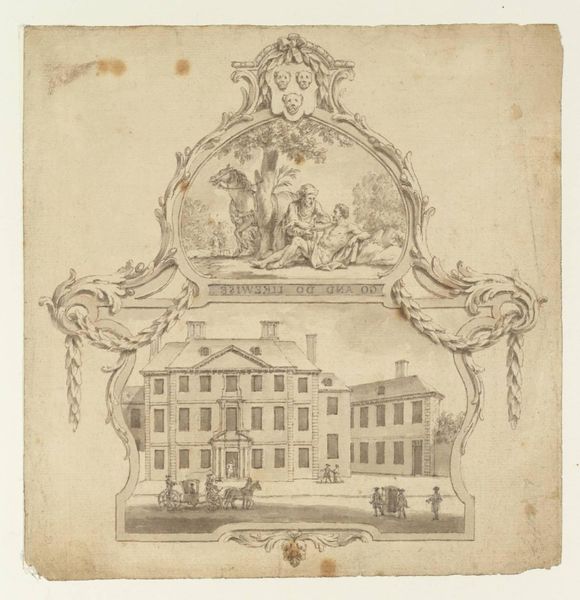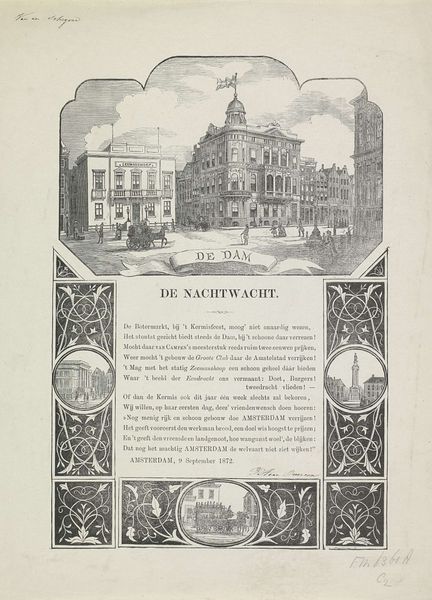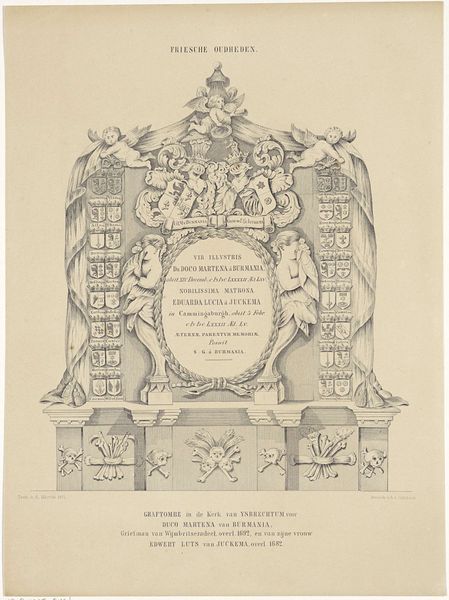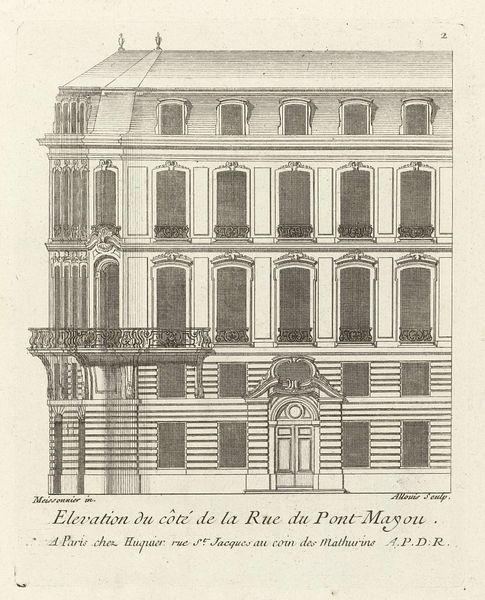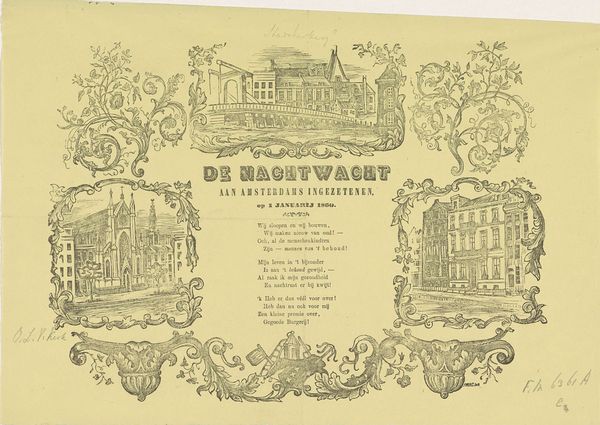
Nieuwjaarswens van de Amsterdamse nachtwacht voor het jaar 1857 1856 - 1857
0:00
0:00
drawing, graphic-art, print, engraving
#
drawing
#
graphic-art
#
pen drawing
#
mechanical pen drawing
# print
#
pen sketch
#
old engraving style
#
personal sketchbook
#
linework heavy
#
sketchwork
#
pen-ink sketch
#
pen work
#
sketchbook drawing
#
engraving
#
calligraphy
Dimensions: height 347 mm, width 213 mm
Copyright: Rijks Museum: Open Domain
Curator: This is a print titled "Nieuwjaarswens van de Amsterdamse nachtwacht voor het jaar 1857" by Friedrich Robert Prinz, created between 1856 and 1857. It's primarily a pen drawing and engraving. Editor: My first impression is that it's incredibly detailed, almost overwhelming. It feels like a symbolic representation of Amsterdam itself, but very formally constructed. Curator: That's a good way to put it. The piece, literally translated, is the Amsterdam Night Watch's New Year's Wish for the year 1857. So it presents itself as a formal announcement, touching on themes of civic duty and local identity. You can see that in the buildings that frame the central text, alongside the rendering of Rembrandt. Editor: Yes, those buildings are clearly meant to convey a sense of authority and permanence. Given it is a print, I am intrigued by its function – its utility. It feels very much tied to a particular moment in time, both literally, given its New Year's salutation, but also as a crafted object designed for dissemination and consumption. What can you tell me more about this object as cultural ephemera? Curator: Right. Well, during the 19th century in the Netherlands, these kinds of "wishes" or "greetings" circulated as a means of social connection but also to assert a presence and civic power through artistic media. Consider the positionality of the Night Watch – charged with surveillance and protection, the artwork signifies a desire to showcase both power and benevolence, while being inherently intertwined with surveillance practices. Editor: The detailed linework of the engraving certainly suggests meticulous labor. The architectural representations have a cold precision that feels deliberate. Perhaps that attention to architectural and sartorial detail was part of this assertion of public presence you mentioned? It acts like visual inventory or even control. Curator: Precisely. I also see in it the intersection of social classes within the "Nachtwacht", itself, during a moment in Dutch history shaped by growing economic divides and rising tensions around social hierarchy and national identity. Editor: It definitely offers an intriguing glimpse into the visual culture and social dynamics of 19th-century Amsterdam. A fascinating confluence of craft, social signaling and cultural self-regard all mediated by very deliberate materiality. Curator: Yes, it's an intriguing example of how a seemingly straightforward New Year's greeting is in fact embedded with many messages concerning power dynamics within local government during the nineteenth century.
Comments
No comments
Be the first to comment and join the conversation on the ultimate creative platform.
